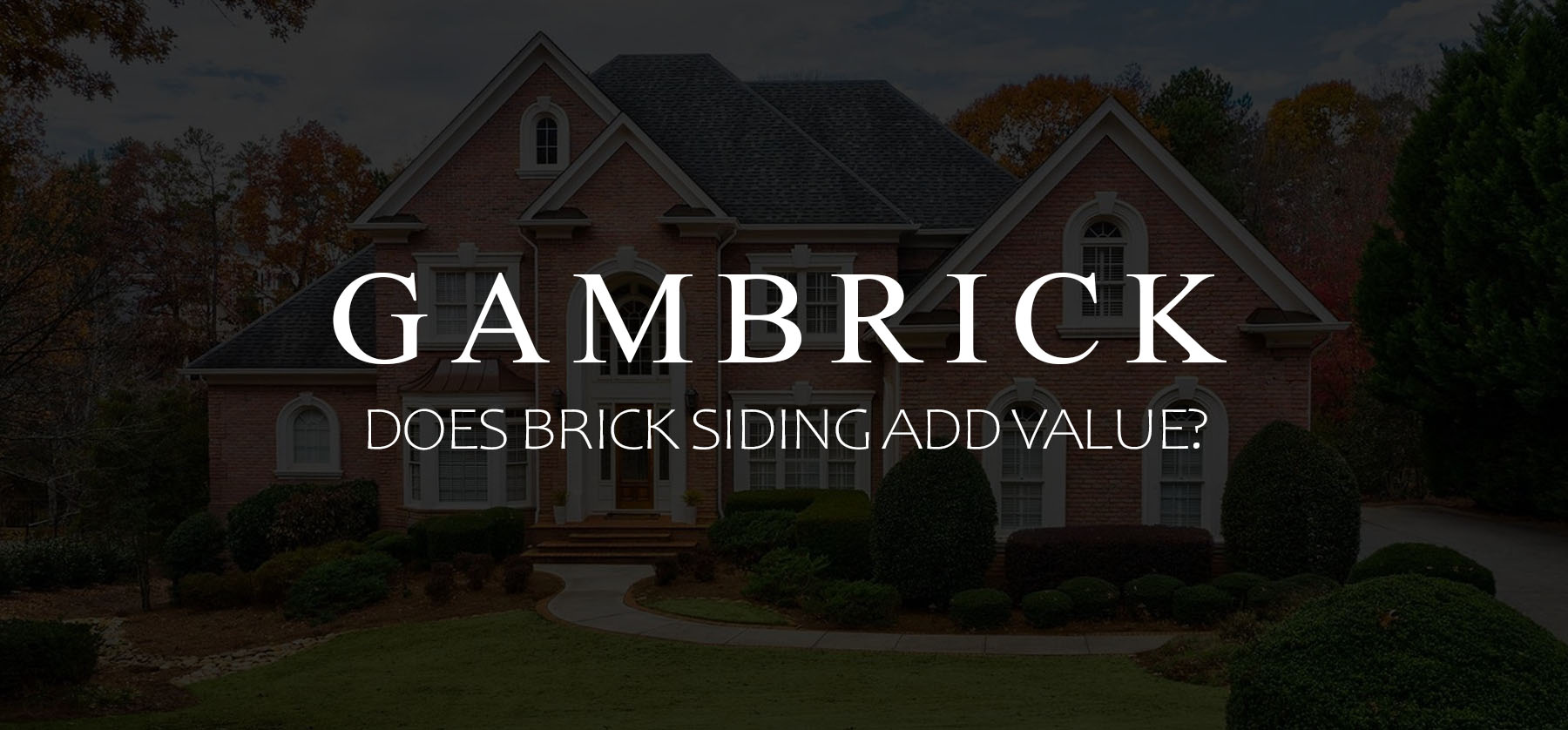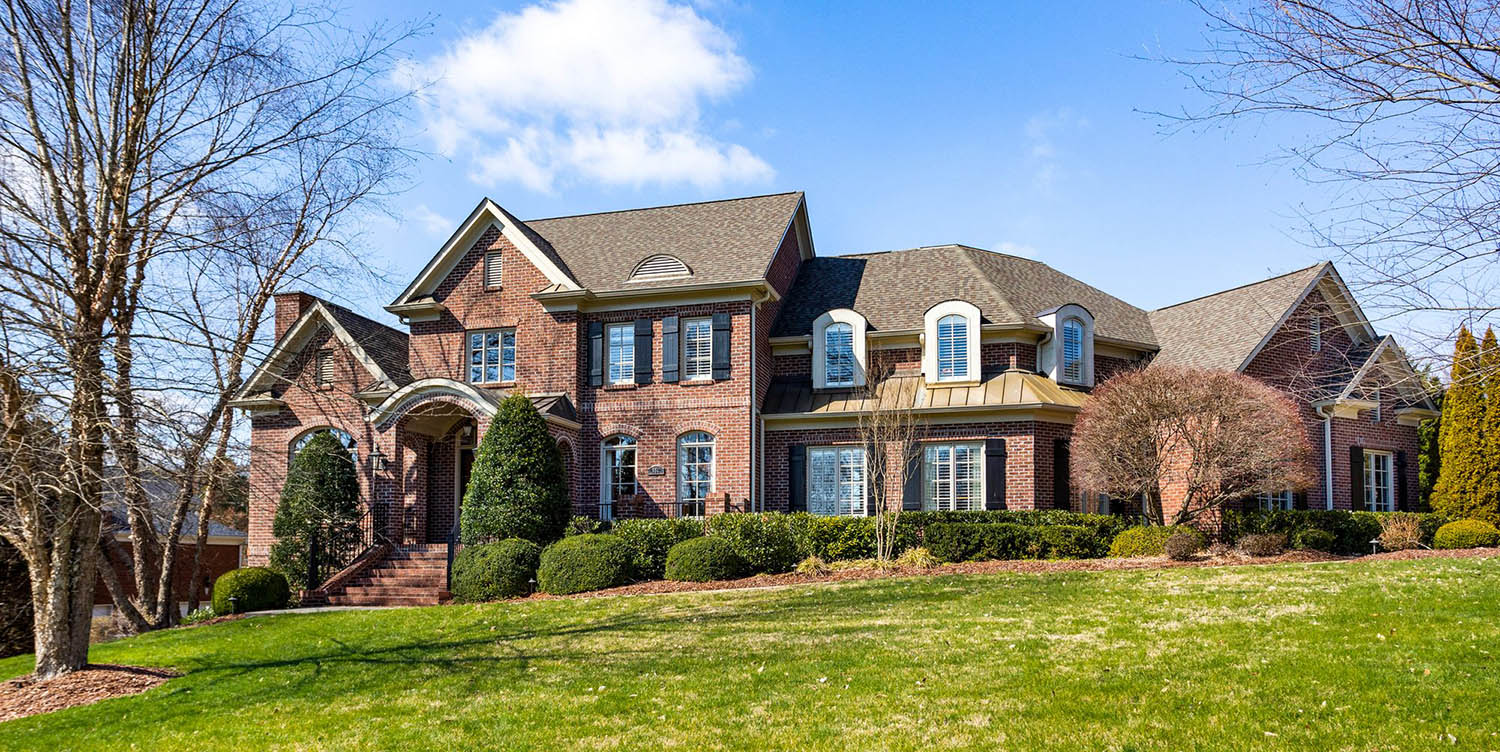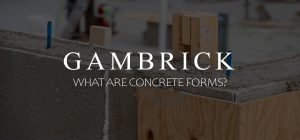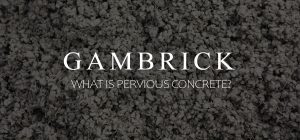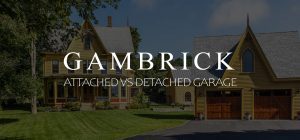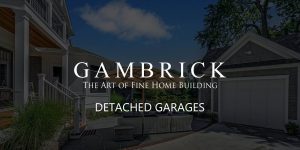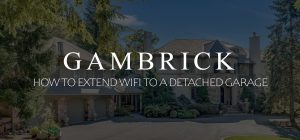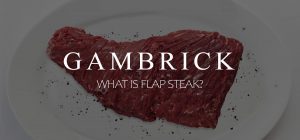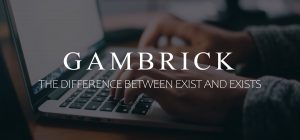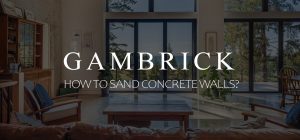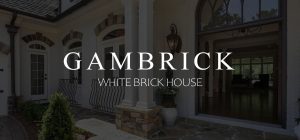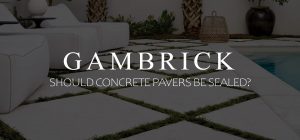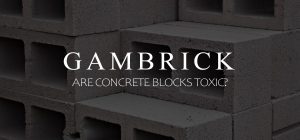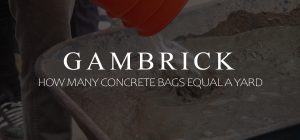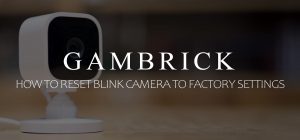Does Brick Siding Add Value?
Brick is a fantastic material to side your home with. Few styles look quite as beautiful as a brick house. But does brick siding add value? Does it increase resale prices? And is it worth the money?
If you like the look of a brick house but have questions about brick sidings value then you’ve come to the right place. Brick homes have been around for centuries not only because of how good brick looks but also due to it’s durability, low maintenance and great long term value. But as newer home siding options emerge, homeowners can choose from a wider range of materials that are typically much cheaper. Brick siding comes at a premium and for all it’s benefits, you still have to weight the added costs vs. how much brick siding adds to your home’s resale price. Does brick siding increase a home’s sale price? Does it add resale value?
In this article we’ll evaluate how brick siding effects home value and help you figure out if it’s worth it.
Beautiful custom home with red brick siding. If you build the right home in the right neighborhood then brick siding can have a better ROI and sell faster than similar homes sided with vinyl, wood or fiber cement.
Brick Home Resale Value
If your thinking about selling your home or buying a new one then you’ll be happy to hear that real estate has been a good investment since the recession of 2008. Real estate prices rise Nationally about 3% on average. However when it comes to real estate values National averages are just a guide. All your research should be done locally. And we don’t mean by State but also county, town and even neighborhood.
Even during a recession when the national average says real estate is dropping, there are still areas that increase. And likewise, during a real estate boom, there are still areas of the country where prices are flat or falling. It’s because real estate prices are local. Even within a town where home costs may be steady, there still could be a street where everyone wants to live which has rising prices.
A home’s resale value is subject to a variety of factors, such as interest rates, the economy, consumer confidence, job numbers, location and the home itself.
As a real estate investor the location of the home, both the city, neighborhood and street, and the home itself are the main factors effecting resale value.
So how does all this tie into brick siding and home value? One of the only things you can directly control is the home itself. You can’t do a thing about the economy, interest rates, wars, recessions, unemployment or the overall real estate market. But you can control the siding you use and how it’s installed.
Brick Homes Have Better Appreciation
For hundreds of years, brick homes have been one of the only designs largely unaffected by swings in the real estate market. This is due to the classic appeal of brick siding. It’s not considered a trendy choice that could go out of style so prices are steady. And it’s a popular choice that appeals to a wide variety of buyers.
Brick homes have always enjoyed a steady increase in value over time and typically sell at the top of the market. Because of this most brick homes realize an above average return on investment under almost any circumstance.
And a brick house appreciates more over time when compared to homes with wood, vinyl or fiber cement siding.This is mainly do to the premium durability of brick. Fiber cement and wood needs constant paint and maintenance. Vinyl fades, warps, cracks and needs replacing every 25 years on average. But a brick house doesn’t need a thing to keep looking great. No paint, no staining, no sanding, no fading, and no need for replacement. Just keep it clean and enjoy.
On top of all the financial benefits to your home, a brick house also improves the appraised value of the surrounding homes. When your home is more valuable that effects the homes next door too. A new beautiful brick home on the black will effect the entire neighborhood in a positive way.
In addition, brick homes are 5-8 percent cheaper to insure than most other homes because they’re more durable and less likely to be damaged by fire or wind blow debris.
No Maintenance Required Makes Brick Siding A Great Value
Unlike wood or fiber cement siding that needs regular painting to keep their color, brick doesn’t need a thing. Because a brick’s color is baked all the way through the entire brick, the color is permanent and doesn’t fade like vinyl siding does and it doesn’t need to be painted.
Home buyers typically ask about the home’s maintenance costs per year. That number helps decide whether or not the buyer can afford the home. Brick siding offers a big advantage by not requiring maintenance which increases the homes resale value.
A wood or fiber cement sided home needs repainting every three – six years. Depending on where the home is located and how large it is, it can cost over $10,000. That adds up over time. Brick siding will never have to be painted. It will never fade and will retain its original beauty for hundreds of years.
But there’s more to maintenance than just keeping your siding looking pretty. Brick won’t rot and is very hard to damage. You won’t have to worry about termites, carpenter ants or other pests gnawing at your siding. Just clean the bricks from time to time and make joint repairs if they’re ever needed.
And bricks don’t need to be sealed like cultured stone veneer of cedar shake siding does. The color stays constant because it’s baked throughout the brick.
My family’s had a brick home for almost 30 years and have never done a thing to keep the brick’s looking great. They still look as good as the day we moved in. Although the neighbors have all re-sided their homes over the years, some multiple times, because of fading, rot, damage or just being tired of the constant painting.
Brick is a low maintenance, highly durable siding material that consistently increases home value over time.
Homes at the highest end of the real estate market typically use red brick or some other masonry product in place of other siding materials.
Bricks Offer The Value Of Home Soundproofing
Bricks offer soundproofing to the home because of how thick and dense they are. Other types of home siding like wood, stucco, vinyl and fiber cement don’t do nearly as much. If you’ve ever been in a city brick building you’ll know how much quieter the inside is compared with the standard home.
And the soundproofing doesn’t just keep street noise out but also helps keep inside noise in. If your having a loud party and don’t want to disturb the neighbors then a brick exterior can help.
Home soundproofing benefits not only light sleepers but also people who just like their privacy.
Soundproofing is just one of many benefits that increases the value of a brick home.
Bricks Are More Energy Efficient
Bricks are a thick, dense material that offers a bit more insulation than most siding types. A 4″ brick has a .80 R-value which may not sound like much but it’s a bit more than what’s offered by vinyl, wood, stucco and fiber cement siding. And some brick installation =s include a layer of rigid foam insulation behind the brick which adds even more insulation.
And energy efficiency isn’t all about R-values. Bricks absorb and store heat which can be a big benefit in winter if some of those exterior bricks extend into the home.
Bricks can help stabilize temperatures inside the home because a thicker exterior wall delays the movement of heat through the wall. In summer, the heat stays outside, and in winter the heat stays inside. This can save you some money in the long term, because as we all know, heating and cooling a home is expensive.
As with lower maintenance and insurance costs. Lower energy bills translates into more money a buyer can put into the house payment. It’s yet another reason why brick homes tend to sell at the top of the market and increase in value steadily each year.
Brick Homes Are Eco Friendly
Bricks are made from some of the most abundant materials on earth, clay and shale. Which makes them a completely bio degradable and recyclable building material. Nothing else even comes close other than wood.
And bricks can be reused for other construction projects, like retaining walls, walkways, or inside the home where older bricks can still be used because they won’t get weather damaged. Interior brick is very popular these days on more than just a fireplace. Customers are using red brick all over the house, even as a kitchen backsplash or accent wall.
Brick can even be ground up and used as a sub-base material or chipped into small pieces for landscaping mulch. The pieces absorb moisture better than any other base material which helps minimize the buildup of mold and mildew.
Repurposed brick is a very popular building material for all types of applications inside the home. Many designers use like to use older bricks because they have a look that newer products can’t match. Old bricks can even be cut into thin slivers and made into brick veneer that gets installed just like tile with a trowel and mortar.
Eco friendly building materials are a feature that’s very important to some buyers and they’re willing to pay a premium for them. Being able to say your home is more green than your competitor is a big plus these days and definitely adds to the home’s value.
Bricks Offer A Better Return on Investment
Even though the initial investment of brick siding is higher than wood, vinyl or fiber cement, a brick home appreciates more each year when compared to other homes in the area and has a higher immediate appraisal at completion.In other words, if you build 4 of the exact same homes side by side, each with a different siding type, the one with brick will be worth the most. And it will appreciate at a higher rate than the others year after year.
When you compare equally sized homes in the same area, a brick home can see an immediate increase in value by about 8% over a home with wood, vinyl or fiber cement siding. For example a $500,000 home with vinyl siding would appraise for around $540,000 just by adding brick siding. That’s a nice increase in resale value.
And over time it appreciates by about 1% more than other homes. For a family that’s planning on staying in a home for a while that small increase will add up. And that’s on top of all the savings you’ll get from no maintenance requirements, lower energy bills and lower insurance premiums.
And studies show that brick homes sell faster than comparably sized homes with vinyl, wood or fiber cement siding. That’s crucial when you’re in a tight real estate market Especially when times are bad.
Brick homes generally sell at the top of the market and they sell fast. All these factors add up to a much better ROI with brick siding and great long term value.
Red brick siding with stucco trim. Brown metal accent roof with asphalt shingle. A home designed like this one has a better ROI than similar homes with vinyl siding, wood or fiber cement and they increase in value more per year.
Brick Siding Costs
Whenever you calculate your ROI and evaluate if a home improvement is worth the money you have to understand the up front cost.
A single layer of bricks are stacked with mortar joints around the exterior wood walls of the house. This can be done around the entire home or some other design. many homes use brick for the front and another material for the sides and back. Some use brick as more a decorative feature. For the sake of this article we’re assuming the entire home has brick siding. Although any home benefits somewhat from the added value of brick.
The average cost for brick siding is $10.00 to $22.00 per sq. ft. installed. This will be adjusted based on the homes shape, the amount of windows and doors, the height of the house, your brick pattern, and the type of brick you select. For a traditional rectangle shaped 2200 sq. ft. 2 story home you can expect to pay around $40,000 for brick siding.
If that home is worth $500,000 then the cost of brick siding would definitely be worth the investment because you’ll see around an 8% premium when compared to other forms of siding. However if the home is worth $200,000 then it’s a harder choice. There are still lots of benefits to consider but it’ll require more thought. If the home is your and you’ll be living there for 10+ years then it’s probably worth it. But if it’s a house flip or spec home then probably not.
Brick is among the more expensive siding options, but its added value and durability help offset that high up front cost.
Brick homes also have some of the highest return on investment rates over time. Generally we see about 1% more per year in added value than comparable homes with vinyl, wood or fiber cement siding.
Brick Home Values Can Be Area Specific
All real estate advice and information should be adjusted for your specific location. This can be especially true of brick siding since it’s an expensive investment.
So how does your location effect the added value of brick siding? Let’s say you live in a beach town where all the homes have cedar shake siding. That’s the look buyers want and that’s what you should give them. Adding brick siding to the community may just look weird and local buyer could reject it. If we were building a spec home here we’d use cedar shake too.
Always match your home design to the buyers your selling to.
On the other hand, let’s say all the homes in the area have brick siding. In this case it’s expected and you have no choice. And you won’t get much of a premium when using it either since brick is baked into the local real estate costs.
Our third option is an area that has a variety of home siding choices. That’s what we typically see here in the NJ suburbs. You can drive around neighborhoods and see 100 homes all with different designs, colors and materials. Some of the homes have brick siding and they tend to be at the high end of the market and sell the fastest. In this case paying a premium for brick could be a good idea and worth the money.
Whatever your local market is we recommend getting multiple bids and doing the math first before spending a dime.
Quality Matters With Brick Value
Another factor worth mentioning is quality. No one’s going to pay top dollar for a house with poor quality bricks or shoddy construction work. Make sure you use good quality materials and hire a professional bricklayer. Look at their past work to make sure they know how to install brick and don’t cut corners.
Bricks need a good vapor barrier behind the brick wall, drainage through weep holes or other methods and an air gap between the siding wall and exterior sheathing. All the gaps should be equal and the brick lines level. Laying bricks on a large home isn’t easy.
Also notice the sills at each window. They need to pitch down to allow for proper drainage. Without this you could get water penetration through the windows.
Supports called lintels should be installed above each window, door and large gap to support the bricks above. Without them you’ll end up with cracked bricks and a sagging wall.
If you want the maximum amount of home value and increased resale price then make sure to use quality materials and a professional installer.
Summary: Does Brick Siding Increase Home Value? And Is It Worth It?
Does brick siding increase home value? And are they worth it? Both are great questions to ask if your considering building a brick home. I most cases the answer is yes. Brick homes sell at a premium compared to similar homes sided with vinyl, wood or fiber cement. They also sell quicker and have a better ROI. But all real estate advice is local so a lot of research has to be done before you spend any money on brick. but if you’ve got the right house, in the right neighborhood, then brick siding can be well worth the money.
I hope some of the information and pics shown here will help you with your decision to buy or build a brick home.
If you have any questions or comments e-mail us any time.
